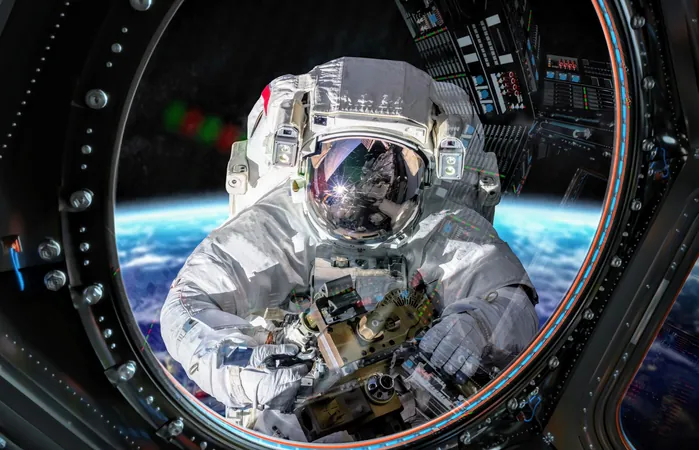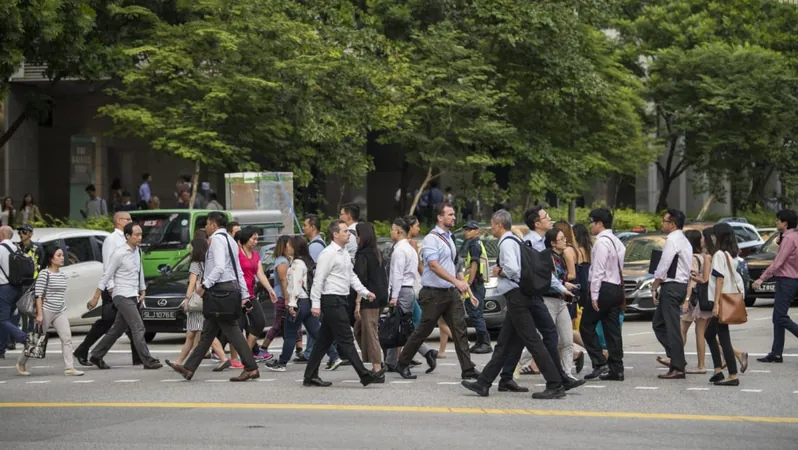
Shocking Discoveries: Long-Duration Space Flights Could Endanger Astronauts’ Eye Health, Raising Serious Mars Mission Concerns!
2025-01-28
Author: Ming
The Alarming Findings
Microgravity is not just a thrilling novelty; it profoundly affects the human body, particularly the eyes. Studies conducted on astronauts aboard the International Space Station (ISS) have revealed a disturbing trend: over 70% of them experience symptoms related to a condition known as spaceflight-associated neuro-ocular syndrome (SANS). This syndrome results from the biomechanical changes in the body due to zero gravity.
Dr. Santiago Costantino, a leading ophthalmologist at the Université de Montréal, and his team analyzed data from 13 astronauts who spent between 157 to 186 days in space. Their research showed concerning changes in key ocular parameters:
- **33% decrease in ocular rigidity** - **11% decrease in intraocular pressure** - **25% decrease in ocular pulse amplitude**
These significant fluctuations could have dire implications for an astronaut's vision—ranging from distorted focus to swelling of the optic nerve.
Why Do These Changes Occur?
So, what’s behind these eye issues? Dr. Costantino explains that weightlessness impacts blood distribution in the body, inadvertently elevating blood flow to the head. This can lead to an expansion in the choroid, which nourishes the retina, thus triggering the cascade of symptoms associated with SANS.
Could You Overcome the Risks?
Fortunately, there is a silver lining. Most astronauts experience a return to normal eyesight after their missions, often resolving issues simply through corrective lenses. However, these findings have raised red flags regarding the health risks associated with extended journeys—especially for the upcoming Mars mission.
The Mars Mission Dilemma
The stakes are incredibly high for missions targeting Mars or similar long-term objectives. With missions potentially lasting two to three years, the risk factors and progression of SANS become increasingly uncertain. To ensure astronaut safety, researchers are diligently investigating potential solutions:
- **Wearable technologies**: Devices monitoring intracranial pressure or simulating Earth-like gravitational forces could be pioneering. - **Dietary and pharmaceutical interventions**: Innovations aimed at reducing choroidal expansion and improving venous circulation are under exploration. - **Real-time diagnostic tools**: Improved imaging technologies and portable devices could facilitate quick assessments of ocular health during flights.
The Road Ahead
Collaboration between space agencies, medical professionals, and researchers is essential to mitigate these risks. As Dr. Costantino’s team awaits further data from NASA, their ongoing investigation highlights the urgent need for strategies that can protect astronauts' vision and overall health as we embark on ambitious journeys into the cosmos.
The fate of our future explorers hinges on understanding and addressing these medical challenges. As humanity sets its sights on Mars, safeguarding the health of our astronauts is not just an ideal—it’s imperative.
Stay tuned for more developments in this groundbreaking research that could forever alter our approach to space travel!




 Brasil (PT)
Brasil (PT)
 Canada (EN)
Canada (EN)
 Chile (ES)
Chile (ES)
 Česko (CS)
Česko (CS)
 대한민국 (KO)
대한민국 (KO)
 España (ES)
España (ES)
 France (FR)
France (FR)
 Hong Kong (EN)
Hong Kong (EN)
 Italia (IT)
Italia (IT)
 日本 (JA)
日本 (JA)
 Magyarország (HU)
Magyarország (HU)
 Norge (NO)
Norge (NO)
 Polska (PL)
Polska (PL)
 Schweiz (DE)
Schweiz (DE)
 Singapore (EN)
Singapore (EN)
 Sverige (SV)
Sverige (SV)
 Suomi (FI)
Suomi (FI)
 Türkiye (TR)
Türkiye (TR)